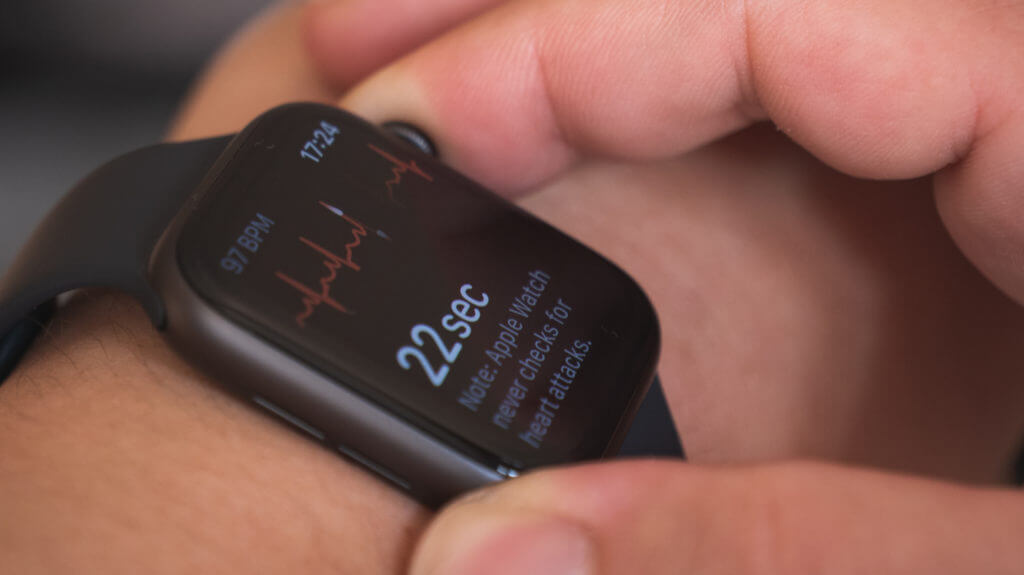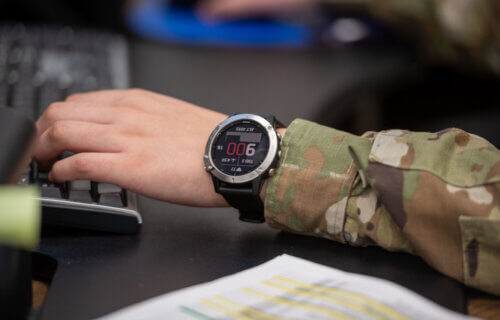WASHINGTON — The U.S. Department of Defense (DOD) has invented a wearable device capable of identifying diseases six days prior to illness onset. In partnership with the private sector, the Defense Innovation Unit (DIU) developed an AI algorithm that proved highly successful in identifying infections during the COVID-19 pandemic.
On April 28, Jeff Schneider, program manager for the Rapid Assessment of Threat Exposure (RATE) project, announced plans to expand the technology’s use for detecting other infectious diseases in service members.
“The DOD invests heavily in maintaining the readiness of its workforce to conduct essential missions. However, the risk of infectious disease, like COVID-19, has long been an unpredictable variable,” Schneider says in a government release. “With RATE, the DOD can use commercial wearables to noninvasively monitor a service member’s health and provide early alerts to potential infection before it spreads.”
With an additional $10 million in funding, RATE will build on its 2020-2021 success, which demonstrated that wearable technology could predict COVID and other infections 2.3 days prior to diagnostic testing. Currently, the technology utilizes biometric data from commercial-grade wearables like Garmin watches and Oura rings, but the plan is to use biomarker data from any smart wearable device.
The DIU’s RATE project employs a powerful, predictive AI algorithm trained using hospital-acquired data from monitored COVID-19 cases. In some instances, the algorithm predicted infections up to six days prior to onset, including asymptomatic cases. A 2022 study published in the journal Scientific Reports featured this algorithm.
With the additional funding, DIU is adding 4,500 more users across the department, including the Air Combat Command’s first sergeants.
“Technology has finally produced a product that will increase overall health and wellness for a community of first sergeants who many times prioritize their people ahead of their own health,” says Air Force Chief Master Sgt. Christopher Gradel of the Air Combat Command.

Tech company Philips is involved in the algorithm development and has expanded its efforts globally to accelerate commercialization and scaling.
“Because our algorithm is device-agnostic, we can use biomarker data from any commercial grade, off-the-shelf wearable,” says Navin Natoewal, head of integrated technology solutions at Philips. “We then run those markers against our clinical data sets in the cloud to create a RATE wellness score. The score has proven to be indicative of the onset of infections. We can offer it through a licensing model to anyone who wants to add this capability to their device or as a stand-alone service.”
Natoewal explained that their AI has undergone years of field testing and peer-reviewed study, offering a cost-effective solution while they continue to expand datasets and research in collaboration with leading academic institutions. Schneider added that the plan is for RATE to be device-agnostic, but the current deployment of wearables will include Garmin watches and Oura rings.
As the Philips-DIU team continues to validate the new dataflow, the effort aims to incorporate three additional popular wearable devices. The 11,000 former RATE users will also have the opportunity to re-affiliate with the projects if they still possess the hardware. The Food and Drug Administration has classified RATE as a general wellness device.
South West News Service writer Dean Murray contributed to this report.
You might also be interested in:
- Best Fitness Trackers For 2023
- Those most at risk of heart disease use wearable fitness trackers the least
- Stamp-sized wearable heart monitor can take medical images without going to a hospital

